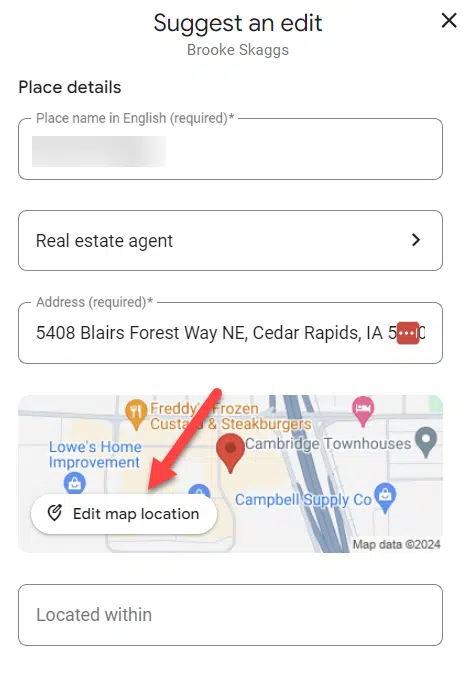Multilingual websites extend content in multiple languages, empowering audiences to access information in their preferred language.
On the other hand, they help businesses maximize their reach and engagement with global audiences.
But that’s not all!
By implementing the best technical SEO practices, businesses can unlock a treasure trove of greater benefits.
For instance, strategic optimization of several technical elements can help businesses effectively capture language-specific queries and improve their visibility and rankings in search engine result pages (SERPs).
This can boost website traffic, accelerating the chances of high conversions and revenue.
However, several challenges might impact multilingual website performance.
In this post, we will share four technical SEO tips to optimize multilingual websites for the best outcomes.
Let’s begin by looking at the key issues with multilingual websites.
Lack Of A Solid URL Structure
URLs allow the target audience to navigate different language versions of the multilingual website, enhancing user experience.
Besides this, they inform search engines about the page’s content to ensure proper indexing and language targeting.
A lack of well-structured URLs can negatively impact user experience and lead to incorrect indexing.
Poor Content Translation And Optimization
Translating the content into multiple languages while maintaining its context and SEO parameters intact is challenging for multilingual websites.
For instance, translating Spanish content into English while incorporating relevant keywords in the respective language can be tricky. Additionally, literal translations can change the meaning of the original content, weakening the content and SEO strategy.
Duplicate Content Issues
The search engines can interpret multiple URLs with the same content as separate pages.
This can lead to duplicate content issues (+ penalty!)
Automatic Redirects
Automatic redirects from one language to another version based on the user’s browser can prevent them (and search engines) from viewing various versions of your website.
Technical SEO Tips For Multilingual Websites
Now that you know the key challenges, let’s explore the four technical SEO tips to combat them and improve your multilingual website’s performance.
1. Focus On The URL Structure
Creating dedicated URLs for each language and country version sends signals to help search engines like Google index the website accurately. This practice increases the chances of your website pages appearing in search results in multiple languages.
The result? Improved rankings in SERPs!
So, specify the regions you want to target with languages to cater to the target audience.
Here are a few crucial approaches to consider while determining the URL structure.
Separate Domains Or ccTLDs (Country Code Top-Level Domains)
This approach involves using separate domain names or ccTLDs specific to each language or country version of a multilingual website.
ccTLDs are two-letter domains assigned to individual countries.
Here are a few examples:
- mybusinessname.es
- mybusinessname.fr
- mybusinessname.com
Here, the domain “.es,” “.fr,” and “.com” reflect the Spanish, French, and English versions of the website, respectively.
This approach makes it easy for search engines and users to identify the content is intended for specific countries. This way, separate domains can help you with clear regional targeting.
However, buying and managing multiple domains can be an expensive venture. In addition, building backlinks and authority for each can consume resources, time, and effort.
Subdirectories With gTLD (Generic top-Level Domain)
This approach involves using subdirectories reflecting different country or language versions of a multilingual website within a single domain (same gTLD).
Here are a few examples:
- mybusinessname.com/es
- mybusinessname.com/fr
- mybusinessname.com/en
Here, “.com” reflects the gTLD domain extension while “/es,” “/fr,” and “/en” depict respective subdirectories for Spanish, French, and English versions of the multilingual site.
This practice allows you to centralize hosting and SEO efforts under a single domain.
However, the users might get confused about whether the subdomains represent country or language for several cases (fr – country or language).
Subdomains With gTLD
This approach involves using subdomains to highlight different countries or language versions of a multilingual website while maintaining the same gTLD for the main domain.
See the examples below:
- es.mybusinessname.com
- fr.mybusinessname.com
- en.mybusinessname.com
Here, “.com” reflects the gTLD domain extension while “es,” “fr,” and “en” before the domain name represent respective subdomains for Spanish, French, and English versions of the multilingual site.
Implementing and managing this approach can require rigorous efforts and time. Again, the structure might confuse the users.
However, localized hosting is cost-effective and can help improve the website page’s speed.
URL Parameters
This approach involves using a URL parameter to the URL to specify the country or language version.
Here are a few examples:
- mybusinessname.com/page?lang=fr
- mybusinessname.com/page?lang=es
- mybusinessname.com/page?lang=en
The URL parameters “?lang=fr,” “?lang=es,” and “?lang=en” depict French, Spanish, and English versions.
Google doesn’t recommend this approach because URLs with parameters can confuse the search engines, negatively impacting the indexing.
2. Translate And Optimize The Pages
Accurate page translation and optimization can help you reach the target audience and communicate the brand message effectively.
So, begin with content translation.
If you rely on tools like Google Translate, proofread the content closely for accuracy.
While Google has incorporated new AI-powered features to provide accurate translations based on context and intent, do not take any risk.
Even minor errors and inaccuracies can alter the intended meaning of the content, thus hurting the user experience.
When proofreading, pay special attention to elements like:
- Time and date format.
- Units of measurement (length, volume, weight, etc.).
- Cultural references (idioms, metaphors, etc.).
- Currency (monetary format, currency symbol, conversion value, etc.).
The key thing to remember here is that everything on your web page should resonate with the target audience’s language, including the writing style and visual elements.
So, avoid using phrases and visuals that are culturally inappropriate.
Here’s how you can optimize the content:
Use Multilingual Keywords
Don’t forget to translate the keywords!
However, rather than sticking to exact translations, use popular search terms in respective languages that can appeal more to native speakers. Finding effective multilingual keywords for the target markets that align with your content can amp up the SEO efforts.
Optimize The Vital SEO Elements
Translate the below-shared non-visible content elements to ensure your international SEO efforts are successful.
Not doing so can send false information to search engine bots indexing your website.
- Meta descriptions: Create compelling meta descriptions by including relevant keywords in languages as per the target audience. Although they don’t contribute to rankings directly, they can positively impact the click-through rate of the pages.
- Title tags: Add title tags that convey the page’s information for each language. Include a multilingual keyword to ensure search engines understand the context and provide rankings. However, refrain from using clickbait.
- Image alt texts: Write accurate and helpful alt texts describing the images for each language. Besides improving the page’s accessibility, they improve the chances of images appearing in Google search results in multiple languages. Note: The length of the meta descriptions, title tags, and image alt text will vary according to the search engines. For instance, writing meta descriptions of 150-160 characters is a good practice to achieve rankings in Google SERPs. However, for the Chinese search engine Baidu, you should maintain meta descriptions of around 120 Chinese characters.
- Internal links: Add internal content links to relevant and helpful pages in the same language. For instance, link a French page to other relevant French pages on the website. This practice will help simplify user navigation while helping search engines discover relationships between pages.
3. Use Hreflang Tags
Hreflang is an HTML attribute that signals search engines of content variations.
See what a hreflang tag looks like:
Here:
- reflects the alternate version of the webpage.
- hreflang=”en-us” highlights the language (English) and region (United States) of the alternate version. The attribute “en-us” indicates the page targets English speakers in the US region.
- href=”http://myexample.com” represents the URL of the alternate version.
Since they represent unique language variations, appropriate hreflang implementation can prevent duplicate content issues and penalties.
The key points to remember while implementing hreflang tags:
- Place them either in the section of the HTML page, HTTP headers (PDFs and other non-HTML files), or within the
tags of an XML sitemap. - Consider including a language and, optionally, a region code. The language code should be in ISO 639-1 format, and the region code should be in ISO 3166-1 Alpha 2 format.
- Add them to all the pages with language variations, including the main version (self-referential). This indicates to Google that there’s a link between the pages, or the search engine might misinterpret the hreflang annotations.
- Include a default page using the “x-default” hreflang tag. It helps users select a suitable language when they can’t find an appropriate version.
Check out this beginner’s guide for hreflang implementation for complete details.
Note: Hreflang tags tell search engines like Google and Yandex about the content variation, but they are not directives. Besides, search engines like Bing and Baidu do not count on hreflang tags. Instead, they leverage “content-language” meta tags to gauge content variation.
4. Provide A Language Selector
Good practice for multilingual websites is to provide a country language selector.
A language selector refers to a user interface (UI) component that empowers users to select a language they prefer while exploring a multilingual website.
They help address different language speakers from the same country, distinguish between languages, and communicate effectively with customers.
This can help uphold your SEO efforts by offering better usability and website crawling.
Plugins can provide language selectors. However, there may be better choices than showcasing national flags according to the target audiences.
For instance, if a US-based website aims to attract Spanish-speaking Canadians and Italian-speaking Americans, there may be better options than using Spanish and Italian flags.
The reason?
- Flags specify countries, not languages.
- Multiple countries can speak the same language.
- A country can have several official languages.
- Visitors can get confused seeing multiple flags and make the wrong decision.
What should you do?
You can refer to a language in its native way of representation.
For example, use “日本語” rather than “Japanese” and “Deutsch” rather than “German.”
Additionally, you can use ISO 639, an international standard.
It consists of a set of two-letter codes to classify languages. For instance, English is represented by the code EN, French by FR, and more.
Leverage any suitable method to enable users to select their preferred language.
Final Thoughts
Following the aforementioned technical SEO tactics for multilingual websites will help you overcome the key challenges, ensuring that each page on your website is well-structured and optimized.
Besides providing a good user experience, these tips will make it easier for search engines to find and index your web pages in all languages.
Moreover, beyond the technicalities, focus on the language-specific search engine behavior and the SEO best practices of the target countries.
On the content SEO front, understand the local culture, language, and how users interact with the search engine.
Content that resonates with the audience in terms of language and relevance drives value for the target audience.
More resources:
Featured Image: Rawpixel.com/Shutterstock




